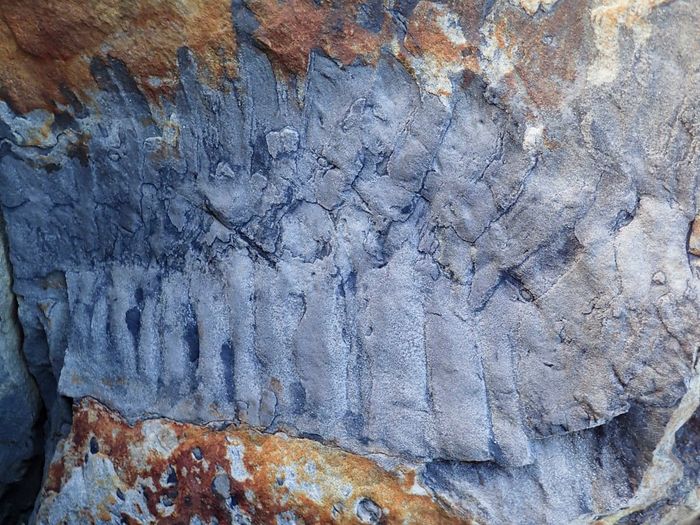Environmental DNA – a tool transforming ecology and conservation
Chloe Li explains the up-and-coming genetic identification methodology that is environmental DNA

Upon mentioning an ecologist at work, you might picture someone counting pine tree species, marvelling at obscure fossils, or sampling from myriads of snails. This is, however, somewhat a picture of the past. Nowadays, if you spot them gathering soil and lake water or standing in a lab, looking indistinguishable from the molecular geneticists, worry not — they are probably just collecting and decoding environmental DNA.
Environmental DNA (eDNA) is genetic material recovered from environmental samples like water and sediment. It is an animal’s natural environmental footprint over its lifetime, including cell shedding, excretory wastes, carcasses, and even bacterial DNA, which can digest and incorporate foreign DNA into itself. It was traditionally thought that DNA deposited this way could not possibly last for a long time on its own, or that even if it did, it would be too similar across samples to reveal anything about the surrounding ecology. Instead, studies of biodiversity have relied on surveying and sampling organism specimens in the field, then classifying them based on morphology, a laborious but necessary endeavour — or so it was thought.
“eDNA is more than just a ‘quick-and-dirty’ source: it can identify species more accurately and comprehensively than previous methods”
Therefore, it was to everyone’s surprise when scientists discovered that eDNA highly varied not only between environmental sample types (e.g. soil, pollen), but also between different ecological environments using the same sample type. eDNA can bind to soil particles to decelerate its degradation and last up to hundreds of thousands of years in the cold, dry permafrost, granting us an unprecedented genetic reach into the past. Importantly, it is a rapid, simple, and cheap source of data as eDNA is present everywhere, with little damage to organisms and their habitats needed for sample collection. But eDNA is more than just a “quick-and-dirty” source: it can identify species more accurately and comprehensively by bypassing subjective interpretations of morphology and by allowing species without a hard shell or those existing at low abundance to be identified. Many have therefore spoken for the potential of eDNA to revolutionise conservation science.
To make sense of eDNA, its analysis must be coupled with our most recent DNA sequencing technology. eDNA contains an immense wealth of genetic information, consisting of thousands of organisms that need to be identified and quantified. The two main decoding approaches used are metabarcoding and metagenomics sequencing. Metabarcoding tests eDNA with short DNA sequences called “marker sequences” that are conserved within a single species but varied between different species. eDNA that matches the marker can be sequenced and compared to a database of genomes of known species to identify those present. Alternatively, metagenomics sequences all the DNA in the sample, instead of solely those selected by markers. This more comprehensive approach allows for measuring the regional abundance of immobile species like plants and track populations over time, albeit less cost-effective. A combination of the two is often used in a method known as enrichment. Environmental samples used in these genetic analyses are drilled from multiple sediment layers corresponding to different stratigraphical time periods to construct an evolutionary snapshot of the entire flora and fauna in the region. This has been used to disentangle complex evolutionary problems.
Achievements of eDNA: from spruce in Scandinavia to megafaunal extinction
The origin of trees in Scandinavia has been a long-lasting mystery. It was commonly believed that no tree survived the Last Glacial Maximum, an event occurring 25-15 kya (thousand years ago) and covering most of North America and northern Eurasia in ice sheets, and present-day species migrated from the south or east into Scandinavia 9 kya after the Ice Cap melted. However, the first eDNA analysis showed otherwise. After sequencing various spruce samples, researchers found a rare and conserved cluster of genes in cell mitochondria, the so-called “powerhouse of the cell” that produces ATP for energy and respiration. This rare gene cluster is unique to Scandinavian spruce, and thus may represent species that survived glaciation. Researchers then analysed eDNA from nearby lake sediments in Norway, dating back as early as 22-17.7 kya, and found this signature gene cluster, concluding that some conifers survived in the ice-free refuge of Scandinavia during the last ice age, pushing back the history of trees to before the last glacial–interglacial period. This has called for scientists to extend the timeframe of studying plant evolution and reconsider the responses of vegetation to climate change.
Unfolding simultaneously was the extinction of megafauna 50-11 kya, when large land-roaming mammals gradually disappeared from the Earth — and guesses on why this occurred have been divided between climate change and human activity. The “Blitzkrieg” hypothesis proposes that rapid megafaunal decline spiralled after the first human contact, which brought about hunting overkill and infectious diseases. Yet by analysing ancient DNA against climate data, researchers showed that megafaunal population patterns broadly mapped onto environmental changes, not the human timeline. This picture was supplemented by eDNA analysis of arctic vegetation. Glaciation sharply reduced vegetative diversity, transforming the Arctic flora from a dry tundra to a wet, woody plant- and graminoid-dominated land. This removed forbs as a major protein-rich food source, continuing the explanatory narrative on megafaunal extinction.
These two instances merely provide a taster of eDNA’s extensive use in answering diverse, complex questions on the evolutionary history of plants and animals, population dynamics and the migration of species. The addition of eDNA to the analytical toolkit represents a crossover between theories of evolutionary ecology and methods of molecular genetics, a collaborative interdisciplinary synthesis that is key to beginning new fruitful research programs.
 News / Caius mourns its tree-mendous loss23 December 2025
News / Caius mourns its tree-mendous loss23 December 2025 Comment / Yes, I’m brown – but I have more important things to say22 December 2025
Comment / Yes, I’m brown – but I have more important things to say22 December 2025 Interviews / Politics, your own way: Tilly Middlehurst on speaking out21 December 2025
Interviews / Politics, your own way: Tilly Middlehurst on speaking out21 December 2025 News / King appoints Peterhouse chaplain to Westminster Abbey22 December 2025
News / King appoints Peterhouse chaplain to Westminster Abbey22 December 2025 News / Clare Hall spent over £500k opposing busway 24 December 2025
News / Clare Hall spent over £500k opposing busway 24 December 2025









